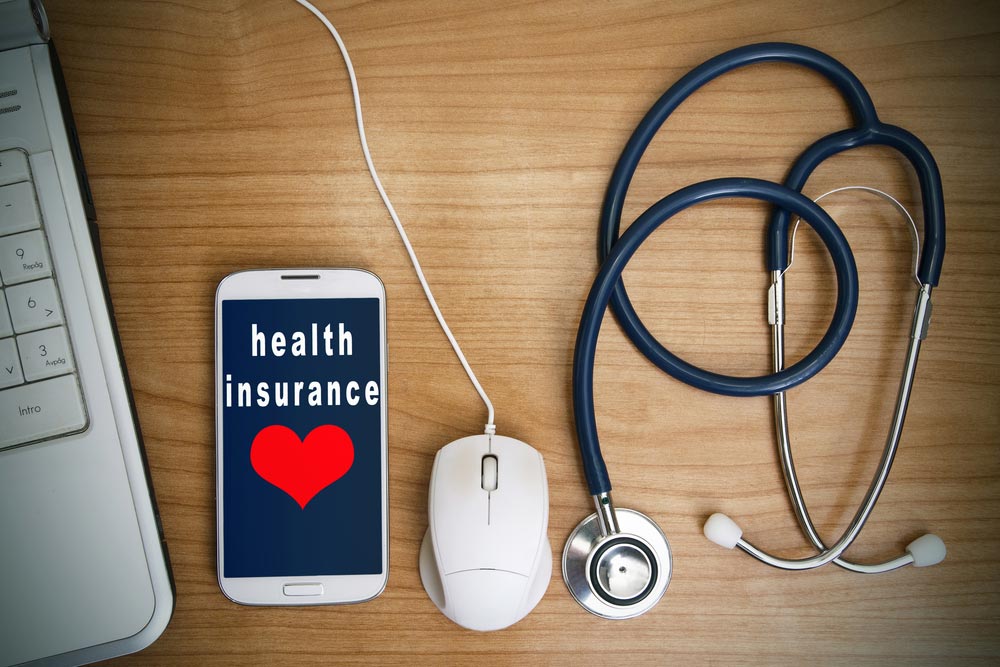
carballo / Shutterstock.com
Note: This post was submitted to Student Caffé by Nathan Barber of QuoteWizard. We would like to thank him for his submission and credit him as the author of this blog post.
Heading to college is a stressful—yet exciting—time, and often the last thing on a student’s mind is their health insurance. However, it’s important to have medical coverage, no matter where you are, particularly since many colleges require their students to be covered. Luckily, there are plenty of health care choices for students. These are the most common options:
1. Stay on your parent’s plan.
The Affordable Care Act (ACA) was passed in 2010. It mandates that children can stay on their parent’s health care plan until they turn 26. That’s great news for students, especially because many won’t be earning their own health insurance benefits until after graduation.
Your parent’s plan will only cover you if it includes dependent coverage, though, so be sure to check that you’re covered before banking on their health plan. You can be added to your parent’s plan even if you live on your own, are married, or aren’t financially dependent on your parents.
You may face a setback if you use your parent’s plan and go to school out-of-state. Because many providers offer policies based on location, you may not be able to find any in-network providers near campus. Be sure to ask your insurer about this before you head to school. Even if there aren’t any in-network providers around your new home, you may be able to get around this by scheduling check-ups when you’re visiting your parents over the holidays or during the summer.
If you are on your parent’s health insurance plan and you turn 26, you are going to be forced off your parent’s plan. In that case, you are going to need to apply for health insurance for yourself.
2. Enroll in a school-sponsored plan.
If you’re not able to stay on your parent’s plan, the next-best option is to turn to your college or university for coverage.
Not all colleges offer health plans for students, but many of them do, and usually at pretty low prices. Some offer plans directly through the school, which then pays and handles any claims. Other colleges partner with an insurance company. School-sponsored health insurance is also usually combined with other tuition and school fees, so it is often deducted automatically with your bill. If you get coverage through your school, too, you won’t have to worry about finding local in-network providers.
3. Purchase a plan from the health insurance marketplace.
Sometimes, the cheapest option is finding a health insurance plan through your state’s or the federal government’s insurance marketplace. By going this route, which takes into account your household income, you may qualify for lower premiums and other savings, and could end up paying less than you would on your parent’s or school’s plan.
4. See if you qualify for Medicaid.
Medicaid is a program that provides health insurance to low-income individuals and families at little to no cost. Medicaid is available to people under 65 years old who have an income up to 133% of the federal poverty level for their family size. (In 2018, the federal poverty level ranged from $12,140 for an individual to $42,380 for a family of eight). The federal government encourages people to apply, even if they may not be approved. Check out your state’s Medicaid requirements to see if the program is an option for you.
5. Explore catastrophic plans.
If you’re a student under 30 years old, you may qualify for a catastrophic plan. These types of plans have low monthly premiums, but an annual deductible of $7,900 (for 2019). Once you hit your deductible, your insurance company will cover any other medical costs that you incur. These plans may work well for people who rarely get sick or injured, but keep in mind that accidents and illnesses can be unpredictable. While the premiums are low, you’re taking a risk with catastrophic insurance because of the high deductible. Make sure to check out what plans (and discounts) you may qualify for under the health insurance marketplace before making the decision to buy into a catastrophic plan.
6. Skip health insurance entirely.
While this is not at all recommended (even the healthiest of people should be getting annual physicals), it is an option. As of 2019, individuals without health insurance will not have to pay a tax penalty. Should you get sick or injured—or visit a doctor for any other reason—and don’t have health insurance, you are responsible for the full cost of any appointments, tests, and procedures. Keep in mind, however, that your school may require proof of health insurance coverage before you’re allowed to enroll.
Although there’s a lot on your mind as you head to college, you should rest easy knowing that you’ll have access to health insurance. Whether it’s through your parent’s plan, your university, or the government, there are plenty of ways for you to stay covered (and healthy) as a student.
-
¿Dónde está tu motivación al despertar?
-
What Freshmen Should Know about Dating in College
-
Going to College with Your High School Sweetheart
-
How Exercise and Exposure to Nature Help You Recover from Addiction
-
Seasonal Affective Disorder in College: Coping with Winter Depression
-
Why It’s Not Important to Be the Best at Everything
-
Seven Benefits of Attending Alateen Meetings
-
Should I Take the Student Health Insurance or Stay on a Parent’s Plan?
-
How to Avoid Burnout in All Areas of Your Life
-
How to Prepare for College as a Student with Hearing Loss

